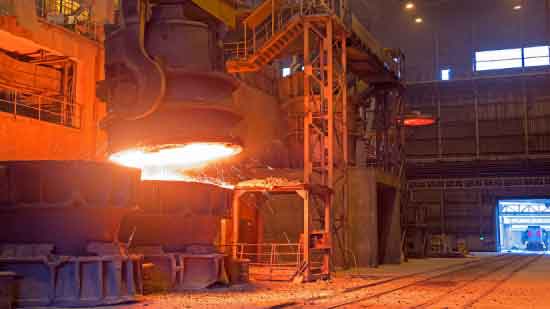
Steel sand casting plays a crucial role in the automotive sector, powering performance and ensuring safety in vehicles. The use of steel sand casting in automotive manufacturing offers several advantages that contribute to the overall performance, durability, and safety of vehicles. Here are some key benefits of steel sand casting in the automotive sector:
- Strength and Durability: Steel is known for its exceptional strength and durability, making it an ideal material for automotive components subjected to high loads, vibrations, and impact. Steel sand casting enables the production of robust and reliable components such as engine blocks, cylinder heads, suspension parts, and transmission components that can withstand demanding conditions and ensure long-term durability.
- Complex Geometry and Integration: Steel sand casting allows for the production of components with complex shapes, intricate details, and integrated functionalities. This enables the design and manufacturing of parts that are optimized for specific performance requirements, such as engine performance, weight reduction, and aerodynamics. Complex components, including intake manifolds, turbocharger housings, and transmission cases, can be efficiently produced through steel sand casting.
- Safety and Crashworthiness: Steel sand casting contributes to the safety and crashworthiness of automotive vehicles. Steel’s high strength-to-weight ratio allows for the production of safety-critical components that provide structural integrity, such as frame components, chassis parts, and steering knuckles. These components help absorb and distribute energy during impacts, enhancing passenger safety and vehicle crashworthiness.
- Heat Resistance and Thermal Management: Steel sand casting allows for the production of components that can withstand high temperatures and manage thermal conditions effectively. Steel’s heat resistance makes it suitable for manufacturing exhaust manifolds, turbocharger housings, and brake components that are exposed to elevated temperatures. Efficient thermal management in these components contributes to improved performance, reduced emissions, and enhanced safety.
- Cost-Effectiveness: Steel sand casting provides a cost-effective solution for producing automotive components. Steel is readily available and relatively affordable compared to other materials used in automotive manufacturing. The scalability and efficiency of steel sand casting enable high-volume production, reducing per-unit costs and supporting cost-effective manufacturing processes for the automotive industry.
- Material Compatibility and Integration: Steel sand casting allows for seamless integration with other materials used in automotive manufacturing. Steel components can be combined with other materials, such as rubber, plastics, or composites, to achieve desired performance characteristics and meet specific design requirements. This compatibility facilitates the integration of steel castings into complex automotive systems and assemblies.
- Regulatory Compliance: Steel sand casting supports regulatory compliance in the automotive industry. Steel components can meet stringent safety and quality standards required by regulatory bodies, ensuring that vehicles adhere to industry regulations and specifications. The ability to produce high-quality steel castings with consistent properties and performance contributes to compliance with automotive industry standards.
Through the use of steel sand casting, automotive manufacturers can produce high-performance components that enhance vehicle performance, durability, and safety. Steel’s strength, durability, and versatility combined with the manufacturing advantages of sand casting make it a trusted choice in the automotive sector, contributing to the overall success and reliability of vehicles on the road.
